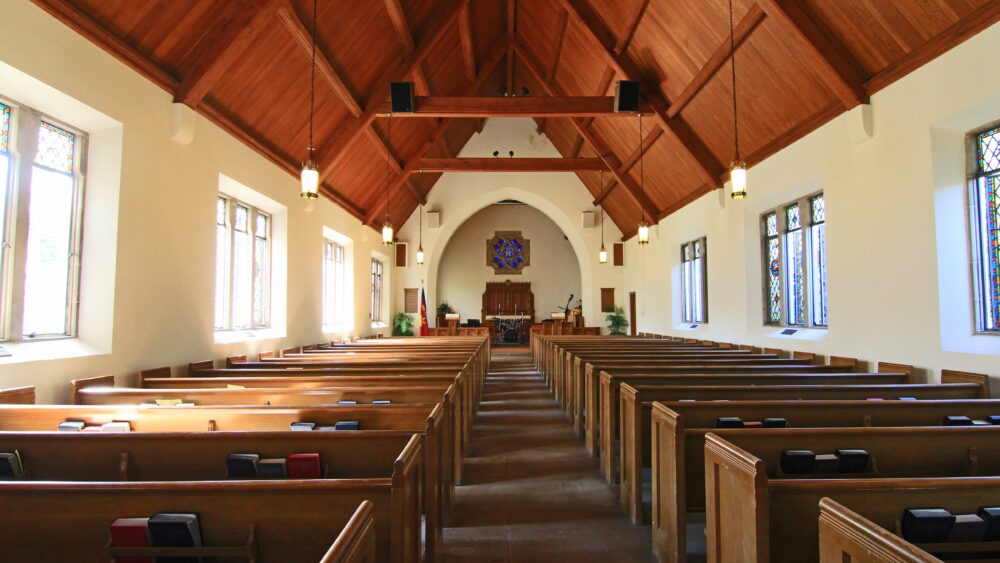Pubs and clubs can have 50 people. Why not church?
NSW group calls on state government to further ease restrictions
Some NSW Christians are lobbying the state government to allow churches to open their doors to gatherings of 50 people.
A petition titled “SOS (save our souls) – open up our churches” – signed by 2558 people so far – is being circulated on social media and by email, and will be targeted at MPs.
The petition was started by the NSW Reformers Christian lobby group (who also created the “Stand with Israel Folau” campaigns). It calls on government to allow believers “the freedom to worship together again as a whole congregation.”
“Unless we’re meeting physically, it’s not a church, not an assembly. Because that’s what church is about according to the Bible.” – Johnnie Li
It makes the argument that “whilst schools and shopping centres are considered essential and open to the public; churches remain unable to provide a place of worship to more than ten people at one time.”
The petition goes on to say: “Depriving Christians and non-believers from gathering/visiting churches with more than ten people inside whilst allowing more than ten people to gather in pubs and cafes is truly a disappointment.”
“Why can’t churches begin to operate at capacity again, with appropriate social distancing measures in place?
“We need to raise our voices and show our MPs that we as Christians want our churches to be treated equally to all other buildings in Australia.”
Pastor of Maroubra Presbyterian Church in east Sydney, Johnnie Li, has signed the petition. He also has shared it by email and on Facebook to encourage others to do the same.
“If restaurants can open up to 50 people, why can’t church open up to 50 people?” Li asks. He refers to the recent announcement by NSW Premier Gladys Berejiklian that from June 1, pubs, clubs and restaurants will be allowed to seat up to 50 patrons as COVID-19 restrictions ease.
If this same allowance was made for churches, Li’s whole congregation – of just under 50 people – could return to meeting in person. While the church is currently running online, Li believes that physically meeting is crucial.
“Unless we’re meeting physically, it’s not a church, not an assembly. Because that is what church is about according to the Bible – [New Testament Greek word] ‘ecclesia‘ means assembly. If you can’t assemble, it’s not an assembly.”
“Is the state government saying it’s OK to drink and gamble but not to pray and worship?” – Michael Andjelkovic
Other community campaigners, such as Michael Andjelkovic in Liverpool, south Sydney, are going it alone but delivering the same message as the petition.
Regarding NSW’s incoming 50-people rule for pubs and clubs, Andjelkovic comments to Eternity: “But what about places of worship? Is the state government saying it’s OK to drink and gamble but not to pray and worship?”
He continues: “Clubs, pubs and restaurants provide food for our bellies but places of worship, our churches, provide food for the soul.”
Andjelkovic has written to his local MP, asking for “churches, temples and mosques” to also be opened to gatherings of 50 people “to attend liturgy, mass or for prayers in order to address their spiritual wellbeing.”
From June 1, Victoria will allow up to 20 people to gather in a church. Under the state’s Stage Three restrictions, “public gatherings, both indoor and outdoor, will increase to 20” and “private worship or small religious ceremonies increase to up to 20 people, plus people reasonably required for the ceremony.”
Weddings can also increase to 20 people, plus the celebrant and the couple. Funerals can increase to 50 people, as well as those conducting the funeral.
As some call for church services to resume with more numbers, even if up to 50 people were allowed to gather, that will require logistical gymnastics.
To meet the requirement for social distancing, individuals must have a space of four square metres each – as well as 1.5 metres between people.
According to the calculations of Michael Stead, Anglican Bishop of South Sydney, this means even some larger churches will struggle to fit many more than 50 people on the premises.
Stead estimates that for most churches, only 22 per cent of current maximum capacity may be filled.
Then there’s the challenges of safely signing in each person at the door, wiping down surfaces between gatherings, and safely serving food and beverages.
Email This Story
Why not send this to a friend?

